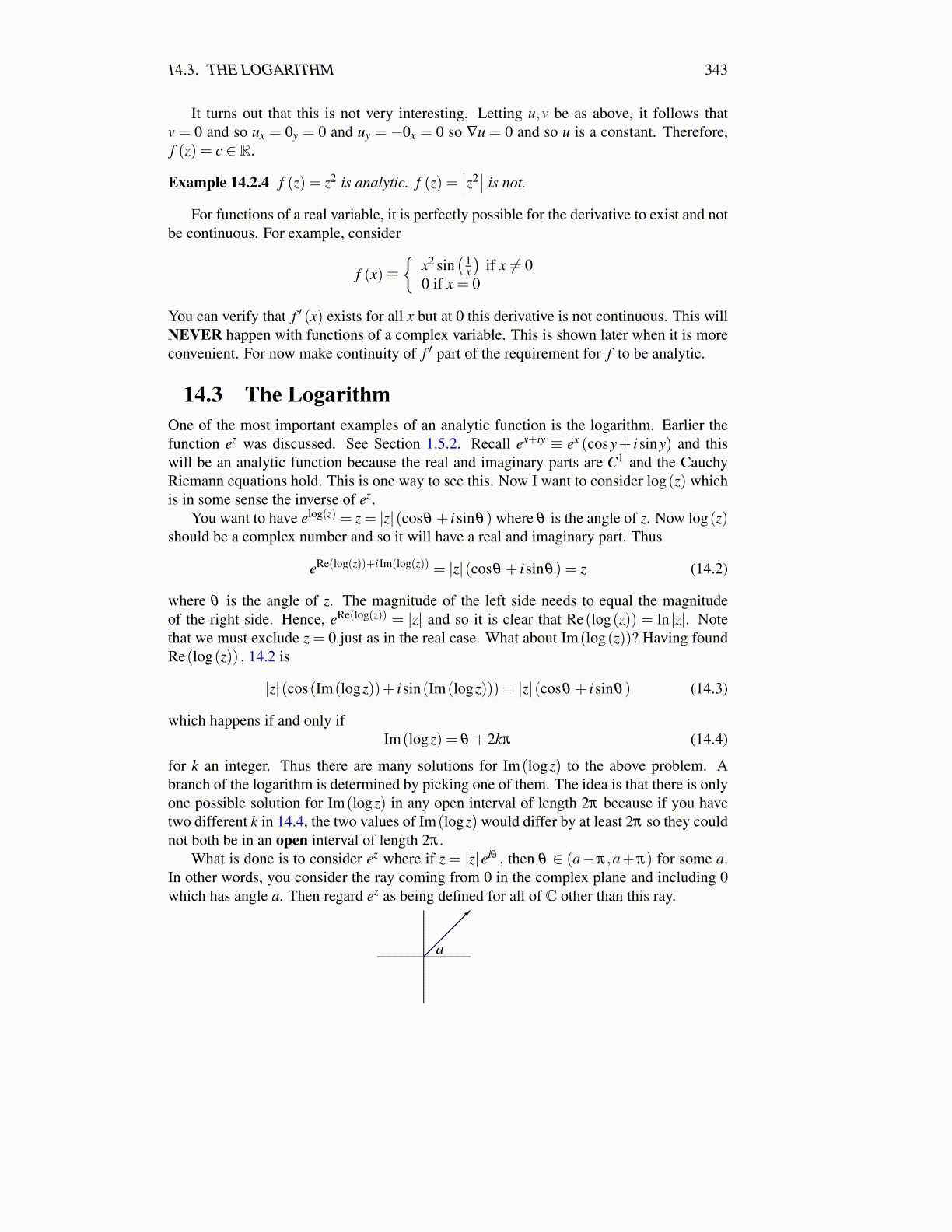
14.3. THE LOGARITHM 343
It turns out that this is not very interesting. Letting u,v be as above, it follows thatv = 0 and so ux = 0y = 0 and uy = −0x = 0 so ∇u = 0 and so u is a constant. Therefore,f (z) = c ∈ R.
Example 14.2.4 f (z) = z2 is analytic. f (z) =∣∣z2∣∣ is not.
For functions of a real variable, it is perfectly possible for the derivative to exist and notbe continuous. For example, consider
f (x)≡{
x2 sin( 1
x
)if x ̸= 0
0 if x = 0
You can verify that f ′ (x) exists for all x but at 0 this derivative is not continuous. This willNEVER happen with functions of a complex variable. This is shown later when it is moreconvenient. For now make continuity of f ′ part of the requirement for f to be analytic.
14.3 The LogarithmOne of the most important examples of an analytic function is the logarithm. Earlier thefunction ez was discussed. See Section 1.5.2. Recall ex+iy ≡ ex (cosy+ isiny) and thiswill be an analytic function because the real and imaginary parts are C1 and the CauchyRiemann equations hold. This is one way to see this. Now I want to consider log(z) whichis in some sense the inverse of ez.
You want to have elog(z) = z = |z|(cosθ + isinθ) where θ is the angle of z. Now log(z)should be a complex number and so it will have a real and imaginary part. Thus
eRe(log(z))+i Im(log(z)) = |z|(cosθ + isinθ) = z (14.2)
where θ is the angle of z. The magnitude of the left side needs to equal the magnitudeof the right side. Hence, eRe(log(z)) = |z| and so it is clear that Re(log(z)) = ln |z|. Notethat we must exclude z = 0 just as in the real case. What about Im(log(z))? Having foundRe(log(z)) , 14.2 is
|z|(cos(Im(logz))+ isin(Im(logz))) = |z|(cosθ + isinθ) (14.3)
which happens if and only ifIm(logz) = θ +2kπ (14.4)
for k an integer. Thus there are many solutions for Im(logz) to the above problem. Abranch of the logarithm is determined by picking one of them. The idea is that there is onlyone possible solution for Im(logz) in any open interval of length 2π because if you havetwo different k in 14.4, the two values of Im(logz) would differ by at least 2π so they couldnot both be in an open interval of length 2π .
What is done is to consider ez where if z = |z|eiθ , then θ ∈ (a−π,a+π) for some a.In other words, you consider the ray coming from 0 in the complex plane and including 0which has angle a. Then regard ez as being defined for all of C other than this ray.
a